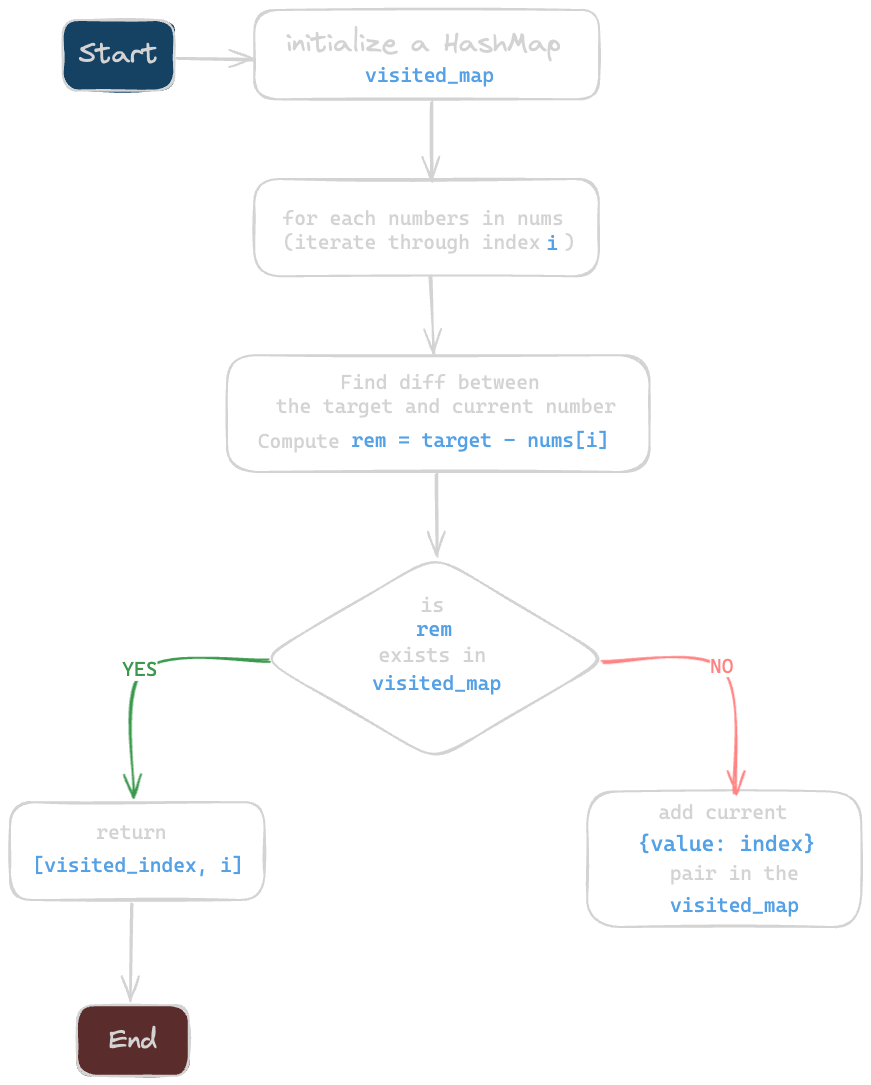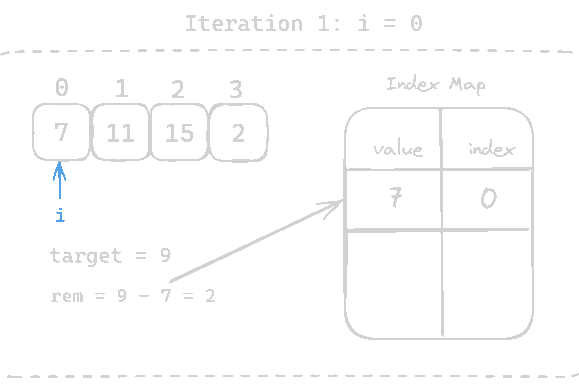Two Sum
Given an array of integers nums and an integer target, return indices of the two numbers such that they add up to target.
Acceptance Criteria:
- You may assume that each input would have exactly one solution
- You may not use the same element twice
- You can return the answer in any order.
Example 1:
Inputs: nums = [2,7,11,15], target = 9
Output: [0,1]
Explanation: Because nums[0] + nums[1] == 9, we return [0, 1].
Example 2:
Input: nums = [3,2,4], target = 6
Output: [1,2]
Explanation: Because nums[1] + nums[4] = 6, we return [1,2]
Example 3:
Input: nums = [3,3], target = 6
Output: [0,1]
Before going through this approach, check out the basic Two Sum (BruteForce) solution first
Intuition
We are aimed to optimized our previous solution, solving this problem in Linear time-complexity.
Let's take an example first
input = [7,11,15,2] and target = 9
expected output = [0, 3]
Like the previous solution, let's iterate from the 0th index.

- We subtract the
targetfrom the current value, e.g.,9 - 7 = 2. - We check if the result (
2) already exists in the map. If it does, we have found our pair. - If it does not exist, we store the
[value, index]pair in the map, indicating that we have visited7at index0. - As we continue iterating, we may encounter
9 - 2 = 7. Since7is already in the map with index0, we can return the indices like[index of 7, current index].
Here is the Flowchart for better understanding and visualization

Let's keep iterating through the list,

-2doesn't exist in the map, so add current value11and it's index1

-6doesn't exist in the map, so add current value15and it's index2

7which already exists in the map and we can lookup the index of7from the map inO(1)time.
Finally, we can return the index of7andcurrent indexas an array.
Complete Code Snippet
class Solution:
def twoSum(self, nums: List[int], target: int) -> List[int]:
visited = {}
for i in range(len(nums)):
rem = target - nums[i]
if rem in visited:
return [visited[num[i]], i]
visited[num[i]] = i
return []

Complexity Analysis
Time Complexity
The given code uses a single pass approach with a hashmap (visited_map) for storing a pair of previously seen number and it's index. Let’s analyze its time complexity step by step:
- The
forloop iterates over allnelements innums, meaning the loop runs O(n) times. - Each operation inside the loop (checking for
rem in visited, inserting into the dictionary) takes O(1) time on average.
Thus, the overall time complexity is O(n), making it significantly more efficient than the brute-force approach (O(n²)).
Space Complexity
The visited dictionary stores up to n key-value pairs, leading to a worst-case space complexity of O(n).
Final Complexity Summary
- Time Complexity: O(n) (Single pass with constant-time lookups)
- Space Complexity: O(n) (Hash table storage)
This optimized approach achieves better performance by trading extra space for faster lookups.
Thanks for Stopping by! Happy Leet coding
Connect with me on



